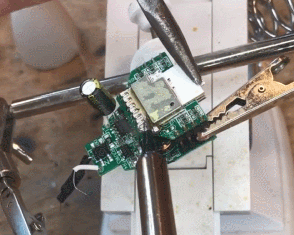Please note:
This device is different from the single outdoor spotlight!
Overview:
This device was bought at an Action store in Belgium. It has EAN code 8712879154488. https://www.action.com/nl-be/p/lsc-smart-connect-tuinspots/
It specifies 3 spotlights, with a light output of 170 lumens. Whether this is total or individual is not specified, but it seems to be for each light independently.
The lights have both a warm white (not adjustable) as well as RGB mode.
It uses a 24 Volts DC (Direct Current) mains adapter with a rated wattage for the whole set of 5.2 Watts. Its efficiency rating is F.
The lights are rated for IP44 dust and moisture ingress.
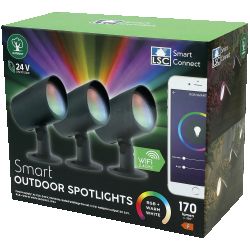
Dissassembly:
My own disassembly process was unfortunately destructive. The wire got damaged trying to get into the light. The method that ultimately worked for me was to heat it up with a heat gun and bend the plastic out of the way.
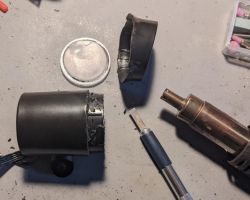
The outer front ring seems to be glued on in specific, small locations. Along with some very strong plastic and alignment tabs, I was unable to get the parts dislocated. This would likely have been possible with more patience, longer heating, and appropriate tools to get them to come apart. Note that the plastic lens is behind a lip of plastic, and cannot be removed from the front without destruction. It's also not necessary to remove the lens in order to complete the teardown.
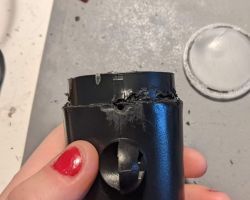
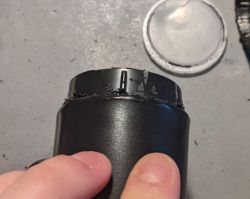
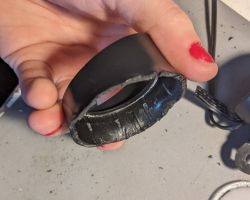
Observing the inner components, we can see a small PCB mounted on a couple of plastic pegs. In my unit, one of the screws was already unscrewed partially (or rather, not fully seated from the factory). The PCB comes out when these screws are undone.
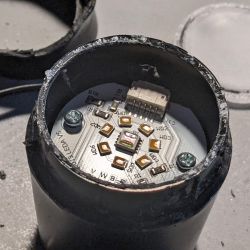
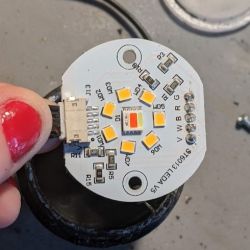
Inspecting the electronics, one can find a ribbon cable running off to the other two lamps (driven by the board in the first) as well as the LED's and driver board inside. There was an unpleasant surprise on the input wiring on my unit... 👀
The microcontroller board / module is a Tuya model CB2L. You can read more about this module on the
Tuya Developer website. Since this module uses the Beken Corporation BK7231N, this module should be compatible with OpenBK: Github - openshwprojects / OpenBK7231T_App - Wiki
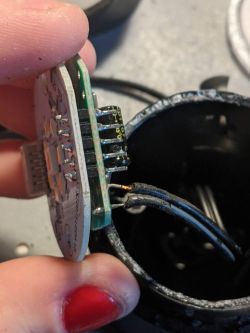
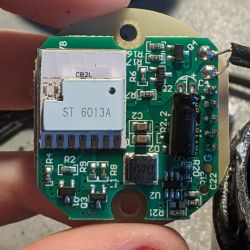
Unfortunately, the pins we need for flashing firmware on to this module are hidden on the back of the module when attached to the device's PCB.
According to Tuya's documentation, this is the pinout of the device:
Top / front
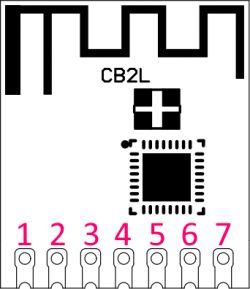
Bottom / rear
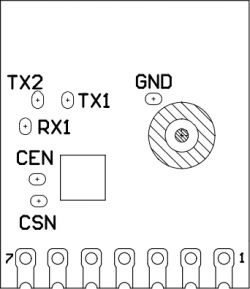
This device is different from the single outdoor spotlight!
Overview:
This device was bought at an Action store in Belgium. It has EAN code 8712879154488. https://www.action.com/nl-be/p/lsc-smart-connect-tuinspots/
It specifies 3 spotlights, with a light output of 170 lumens. Whether this is total or individual is not specified, but it seems to be for each light independently.
The lights have both a warm white (not adjustable) as well as RGB mode.
It uses a 24 Volts DC (Direct Current) mains adapter with a rated wattage for the whole set of 5.2 Watts. Its efficiency rating is F.
The lights are rated for IP44 dust and moisture ingress.

Dissassembly:
My own disassembly process was unfortunately destructive. The wire got damaged trying to get into the light. The method that ultimately worked for me was to heat it up with a heat gun and bend the plastic out of the way.

The outer front ring seems to be glued on in specific, small locations. Along with some very strong plastic and alignment tabs, I was unable to get the parts dislocated. This would likely have been possible with more patience, longer heating, and appropriate tools to get them to come apart. Note that the plastic lens is behind a lip of plastic, and cannot be removed from the front without destruction. It's also not necessary to remove the lens in order to complete the teardown.



Observing the inner components, we can see a small PCB mounted on a couple of plastic pegs. In my unit, one of the screws was already unscrewed partially (or rather, not fully seated from the factory). The PCB comes out when these screws are undone.


Inspecting the electronics, one can find a ribbon cable running off to the other two lamps (driven by the board in the first) as well as the LED's and driver board inside. There was an unpleasant surprise on the input wiring on my unit... 👀
The microcontroller board / module is a Tuya model CB2L. You can read more about this module on the
Tuya Developer website. Since this module uses the Beken Corporation BK7231N, this module should be compatible with OpenBK: Github - openshwprojects / OpenBK7231T_App - Wiki


Unfortunately, the pins we need for flashing firmware on to this module are hidden on the back of the module when attached to the device's PCB.
According to Tuya's documentation, this is the pinout of the device:
Top / front

| Pin number | Symbol | I/O type | Function | 1 | P8 | I/O | Support hardware PWM | 2 | P7 | I/O | Support hardware PWM | 3 | P6 | I/O | Support hardware PWM | 4 | P26 | I/O | Support hardware PWM | 5 | P24 | I/O | Support hardware PWM | 6 | GND | Power | Power supply ground | 7 | 3v3 | Power | Power supply 3v3 |
Bottom / rear

| Symbol | I/O type | Function | CSN | I/O | Mode selection pin. Pull low to enter flashing mode. | RST | I | Hardware reset pin. High level by default, active low. | TX1 | I/O | UART1_TX, user serial interface. | RX1 | I/O | UART1_RX, user serial interface. | TX2 | I/O | LOG TX. | GND | P | Power supply reference ground. | RF | I/O | RF test point. |
Cool? Ranking DIY







